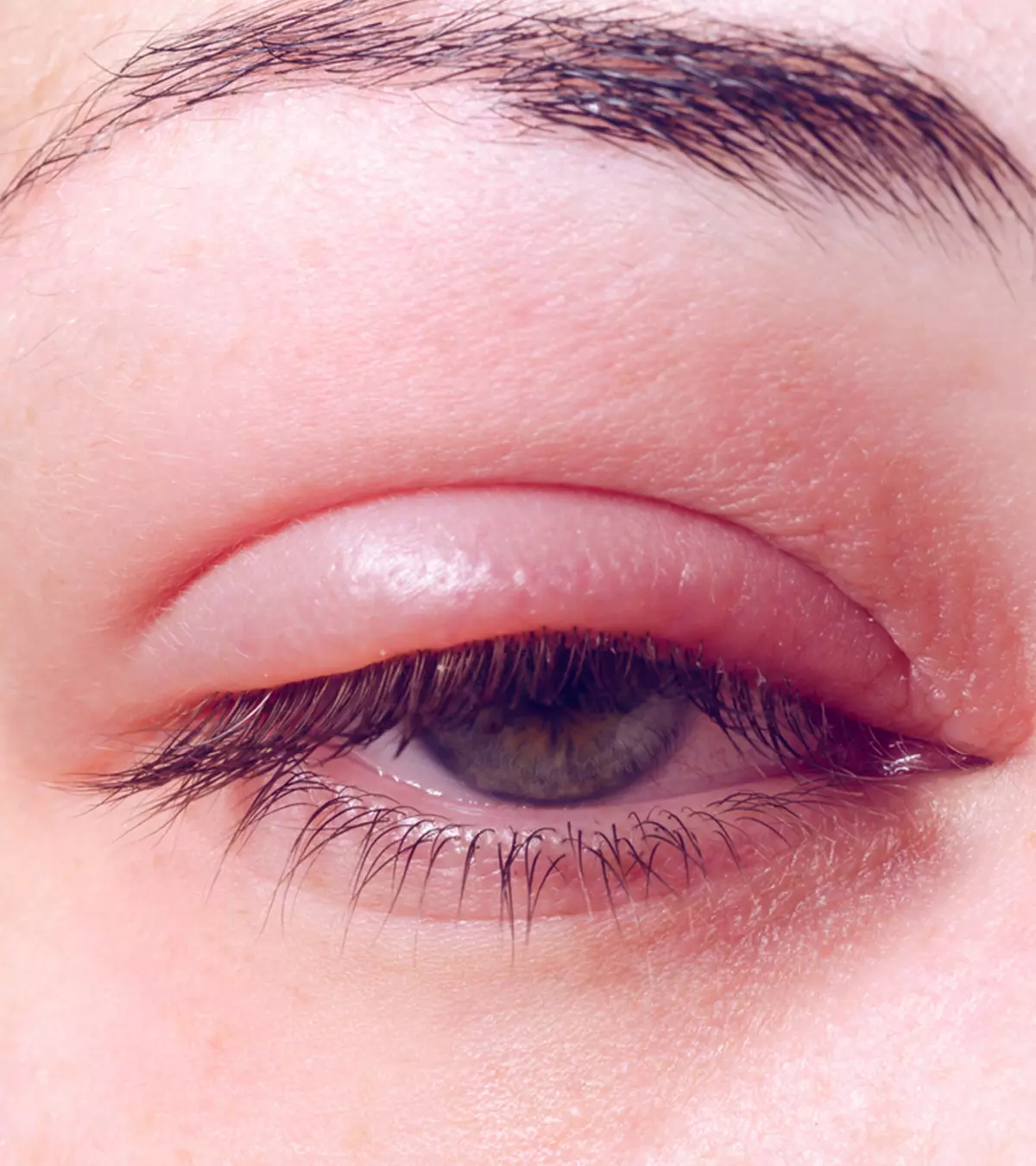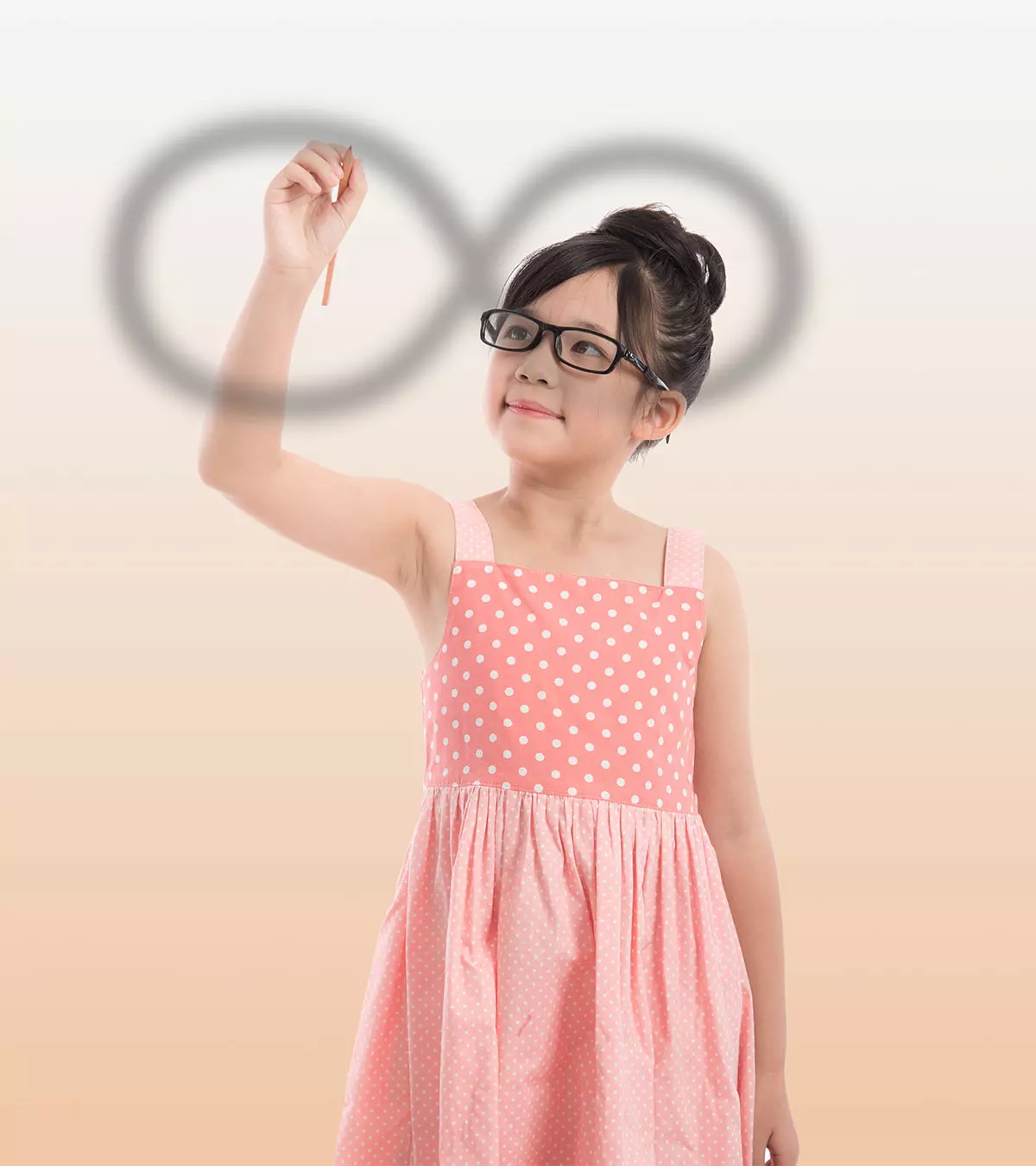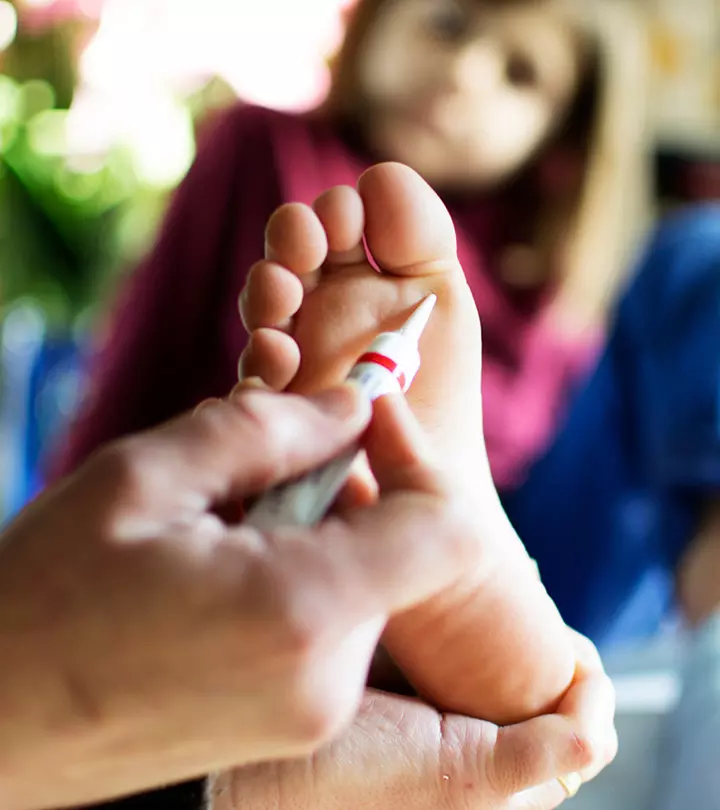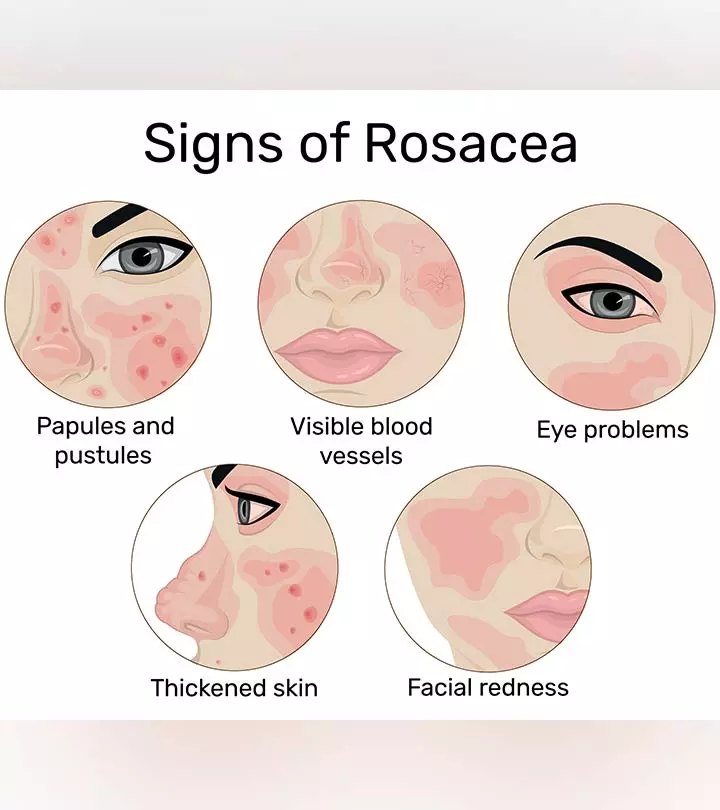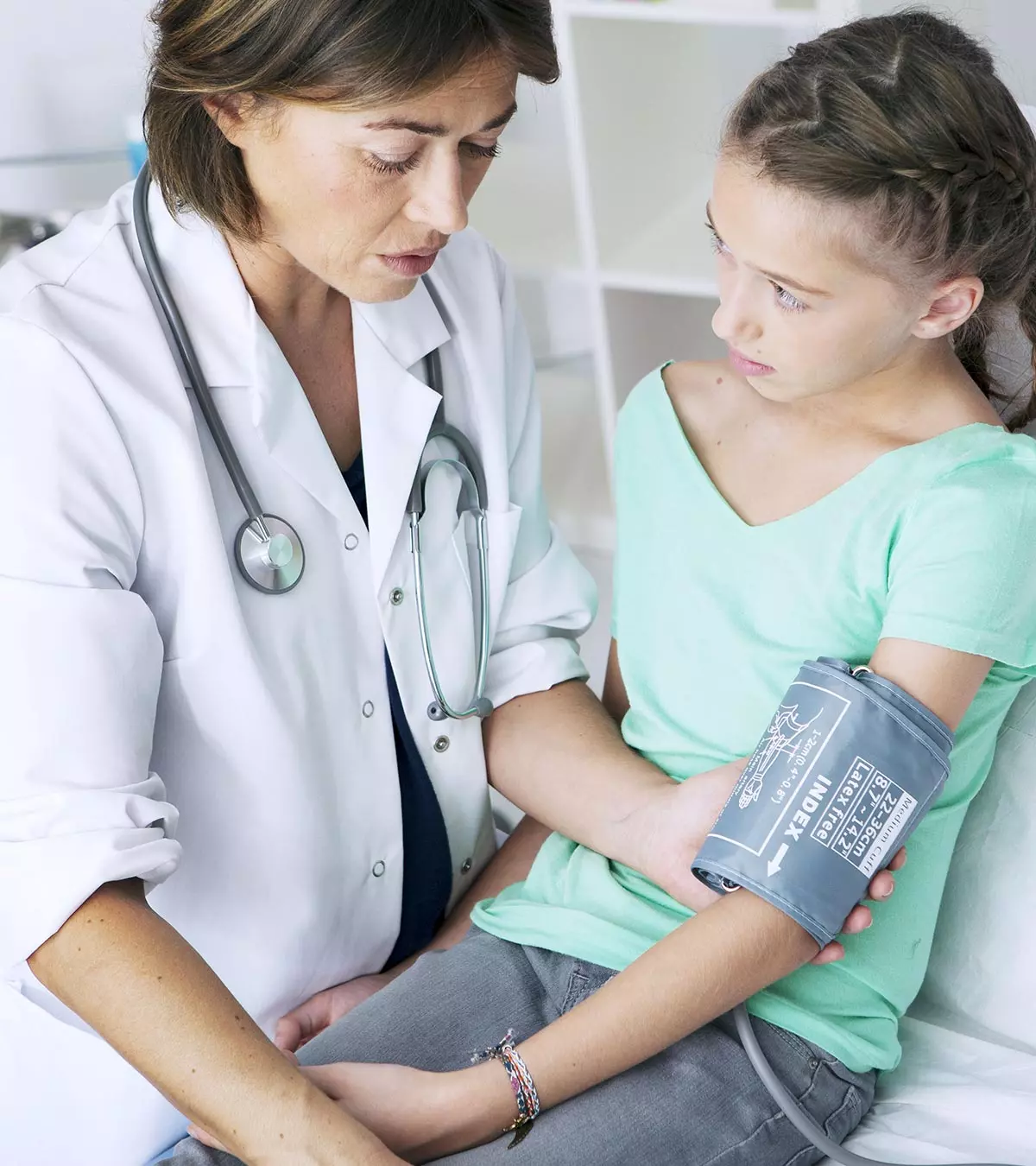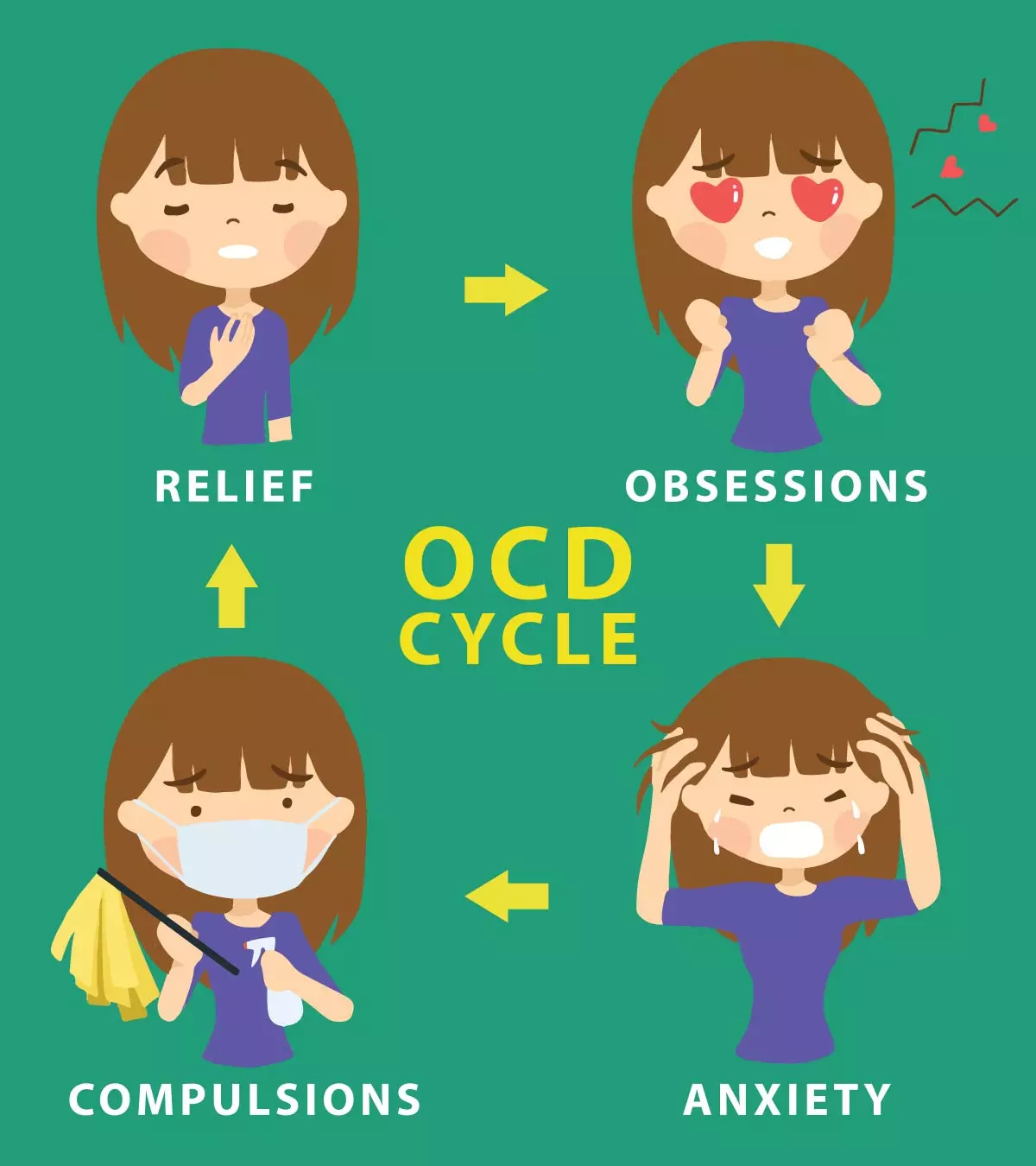
Image: Shutterstock

Obsessive-compulsive disorder (OCD) is a psychological health condition characterized by intrusive thoughts (obsessions) and repetitive activities (compulsions). OCD in children may make them feel compelled to perform certain acts (compulsions) to cope with the tension caused by obsessive thoughts. These actions could potentially disrupt a child’s education and social ties.
Unwanted and recurring ideas, pictures, doubts, or impulses are examples of obsessive thinking. Most children with OCD require cognitive-behavioral therapy to control their obsessions and compulsions.
Read this post to learn more about the causes, symptoms, diagnosis, therapy, and techniques to manage a child with OCD at home and school.
Key Pointers
- Obsessive-compulsive disorder (OCD) is a psychological illness also found in children.
- OCD may occur due to low serotonin levels or triggered by certain infections or mental health disorders.
- Children may become obsessed with certain fears or concerns that compel them to do certain things repeatedly.
- Cognitive behavioral therapy and medications can help manage the condition.
Causes And Risks Factors For OCD
The exact cause of OCD is not yet known. However, the following factors may play a role in the development of OCD in children (1).
- Some researchers suggest that it can be due to lower serotonin levels than others.
- Children with a positive family history of OCD and related disorders have a higher risk of developing OCD. This may indicate a genetic basis for the disease.
- Some children may have an acute onset of severe forms of OCD with distressing and confusing symptoms. The sudden onset of OCD in children is called pediatric acute-onset neuropsychiatric syndrome (PANS). Infectious diseases, such as mononucleosisiA contagious disease caused by the Epstein-Barr virus characterized by flu-like symptoms and enlarged spleen and liver. , Lyme diseaseiA systemic bacterial illness caused by the bite of black-legged ticks characterized by skin rash in the area of the bite, accompanied by fever. , flu (H1N1), and mycoplasma (causes walking pneumonia), are common PANS triggers.
- If the acute onset of OCD is related to a strep infection, it’s called PANDAS (pediatric autoimmune neuropsychiatric disorder associated with streptococcal infections). These conditions can be recurrent and often increase in severity with each recurrence. There are specialists who are learning more about PANDAS syndrome and its appropriate treatment.
- OCD may be related to mental health disorders, such as body dysmorphic disordersiA body-image disorder where an individual hides body fat or avoids mirrors and believes they look ugly. , hoarding disorders, skin picking, trichotillomaniaiA habitual disorder characterized by alopecia (hair loss) due to the constant urge to pull own hair. , and tic disorders, in some children
 Did you know?
Did you know?Symptoms And Signs Of OCD In Children
Most children may not show any apparent signs and symptoms of obsessive-compulsive disorder since it has a gradual onset. Children may become obsessed with fears and worries of getting harmed or injured. They may fear injuring others or themselves or contracting a disease. These fears may compel them to do certain things to balance or neutralize its effects repeatedly.
Some children are aware that the obsessions and compulsions are abnormal and try to hide them. However, many may perceive it as valid. The following behaviors are seen in children with OCD (2).
- Excessive hand washing: Children may wash their hands excessively, causing the skin to become chapped. They believe that washing hands often is required to prevent deadly diseases.

- Extreme hygiene measures: Children with OCD may clean and arrange certain things frequently. They may avoid touching certain things since they believe it can be harmful.
- Extreme desire for perfection: The child may make several corrections in schoolwork or during other tasks for perfection.
- Frequent counting of items: Children with OCD may count various things, such as steps, tiles on the ceiling, footsteps, or the number of items in a container. They may count in their mind or aloud.
- Particular about eating rituals: Children with OCD may eat food in a specific order, tap a spoon or fork a certain number of times, refuse to eat some foods, chew a specific number of times, or slice food into a certain number of pieces. They may not eat if these rituals are not allowed. Some of the eating-related symptoms can also be seen in eating disorders, such as bulimiaiA potentially life-threatening eating disorder where an individual binges on uncontrollable amounts of food, followed by purging. and anorexia nervosaiA serious eating disorder where an individual restricts eating fearing weight gain, resulting in being dangerously underweight. .
- Seek excessive reassurance: Children with OCD may request reassurance in many things more than usual as a coping mechanism. They may either reassure themselves or ask someone for reassurance. Fear of something, asking whether they have done some harm to others, and extreme safety concerns are a few subjects on which the child with OCD may seek reassurance. Some children may also check the locked door or ensure to turn on the alarm many times more than usual.
- Hoard things: Some children may hoard old newspapers or some things which are not useful since they believe that throwing them may cause harm. OCD hoarding is different from people with hoarding disordersiA mental condition of the individual having a strong urge to keep prized, sometimes valueless, possessions instead of throwing them out. . Normal hoarders may find pleasure in keeping old things than fear of throwing them.
- Superstitions: Older children may have extreme beliefs of things or actions that can be lucky or unlucky.
- Odd behaviors: The child with OCD could display unusual behaviors, such as sitting, getting up, and then sitting down on a chair.
Recalling the times when her twelve-year-old daughter Birdy began showing symptoms of OCD, Linda, a mother of two, says, “My husband and I felt helpless, bewildered, and full of despair as we witnessed our once vibrant and successful daughter sink further into the trap of OCD until she was “stuck” to the point of being unable to perform even basic life skills: getting out of bed, walking, reading, eating, bathing, etc. As her OCD intensified and her compulsions seemed to multiply exponentially, Birdy’s frustration became unbearable, and she began harming herself and running away. Ultimately, I had to quit my job to stay home with her and provide full-time care while we searched for solutions (i).”
Children may become distressed and anxious if they cannot carry out their compulsions or are restrained from doing them. Some parents may mistake OCD for a cleanliness habit or stubbornness in their child. Recognizing the signs and seeking medical help when needed is crucial for effective management of the condition.
 Quick fact
Quick factDiagnosis Of OCD
Symptoms may indicate OCD in children. Children could also share their symptoms since many children with OCD are aware of their unusual behavior. Multiple counseling sessions are often required for children to share their obsessions and compulsions with the pediatric counselors. Knowing the reasons for their compulsions and obsessions is necessary to diagnose OCD since the same symptoms can be seen in other disorders due to various reasons. The obsessions and compulsions are analyzed based on the DSM-5 OCD diagnostic criteria by a child psychiatrist or mental health professionals (3).
Obsessions and compulsion may interfere with the child’s abilities and often result in distress. If an infection, such as PANDAS or PANS, is involved in developing OCD, doctors may refer to the concerned specialists for diagnosis and treatment of it.
 Point to consider
Point to considerTreatment For OCD In Children
The following treatments are usually given for children with OCD (4).
- Cognitive-behavioral therapy is the most effective OCD treatment for children, and other treatment options or relaxation techniques could be given with it. Cognitive therapy helps the child to manage obsessive thoughts without resorting to compulsive behaviors. A trainer may teach alternative methods to manage obsessions and compulsions while practicing mindfulness. Other forms of cognitive-behavioral therapy involve repeated exposure and response prevention (ERP). Continuous exposure may help to overcome the fear during ERP therapies.
Linda adds, “Birdy began the IOP (intensive outpatient program) with ERP therapy. Four to six weeks into the program, she started making amazing progress; it was as if her brain was suddenly unlocked, and she could apply the tools and strategies she had learned. Though challenging and exhausting, the ERP therapy allowed her to walk ritual-free, read once more, play her flute, and have fun. Birdy regained her lost abilities, and ERP therapy gave her the confidence to move forward on her life path.”
- Medications, such as the antidepressants called selective serotoniniA vasoconstrictor and neurotransmitter produced by nerve cells responsible for stabilizing mood naturally. reuptake inhibitors (SSRI), are often prescribed in some cases. Clomipramine (another type of antidepressant) is given if the SSRIs are not effective. Medications may cause side effects and may not be sufficient alone to control OCD symptoms. Hence, most pediatricians suggest cognitive therapies along with medication.
- Family therapy may help the family members to understand and deal with the OCD issues of the child.
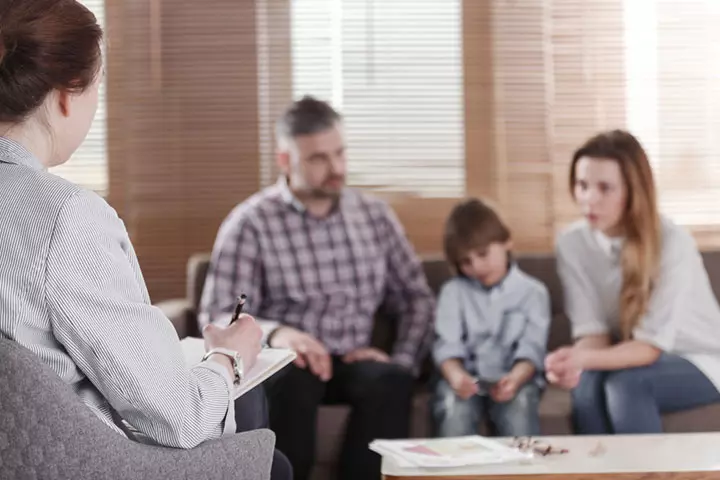
- Group therapy can be beneficial for older children. This involves communication and interactions with OCD sufferers and often helps to reduce the feeling of isolation.
- Antibiotic treatment is generally recommended for OCD due to PANDAS and PANS depending on the current state of infection.
If the training sessions and medical treatments are not effective in managing OCD, children may require inpatient treatment in special centers with intensive behavioral therapies under the guidance of trained doctors and psychiatrists.
Prevention Of OCD In Children

OCD cannot be prevented in most children since the biological factors may cause it (5). However, early diagnosis and appropriate treatment may prevent the worsening of the condition. If the child has first-degree relatives with hoarding or cleaning symptoms, seeking early medical care for obsessive behavior is recommended.
Preventing infections can be beneficial if the OCD is related to streptococcal or other infections (PANDAS and PANS). Treating strep throat and other infections on time with prescription medications may reduce the incidence of neuropsychiatric complications such as OCD in some cases.
How To Help A Child With OCD At Home?
The following tips may help to manage a child with OCD at home (6).
- Consistently set limits for behaviors. A child may display an outburst or meltdown in the beginning, but gradually they feel less anxious.
- Ensure that the caregivers and other family members are not allowing the child to fulfill their compulsions.
- Never accommodate your child’s OCD. Accommodating OCD means other family members change their habits according to the child’s wish or participate in certain activities and rituals suggested by the child. However, awareness and consideration are needed to help alleviate some of the symptoms.
- Reassure and support the child about dealing with their compulsions and obsessions. However, do not give excessive reassurances that are a part of the child’s obsessive-compulsive behavior.
- Reward and praise the child when they display voluntary efforts to curtail their obsessions and compulsions.

- Parents and caregivers should demonstrate understanding and actively participate in their child’s behavioral therapies
Accommodating isolated OCD symptoms may eventually result in disorder. Thus, parents should take a firm stand and set limits to control OCD symptoms from the beginning.
How To Help A Child With OCD In School?
OCD children may face challenges while completing school work. They may have disputes between other students and teachers due to compulsions and obsessions. The following tips may help an OCD child cope with the curriculum and school environment (7).
- Give more time to complete school works and tests since they may take more time due to extensive corrections for perfection.
- Let the child use the laptop to take notes or to do assignments instead of writing. Rewriting and erasing can be problematic compared to typing and changing.
- Allow fostering friendship or a buddy system to prompt them to do tasks. A peer coach who sits next to them can be helpful for many children with OCD.
- Let them give tests in a private room since researchers suggest that children have more control of their thoughts and behavior in a quiet environment.
- Spare reading loud tasks since children with OCD tend to reread sentences for perfection, and reading tasks can be a nightmare for them.
- Listening to audiobooks can be helpful for children with OCD who take more time to read books.

- Break homework into smaller sections since lots together can cause anxiety, and they may start worrying about making mistakes.
- Give an escape plan from the OCD thoughts and compulsions. Let the child signal the teacher and leave the classroom if they have OCD symptoms coming in. Frequently asking permission and interrupting the class can be embarrassing and often result in bullying from other children.
- Give advance notice of things since children with OCD can become more anxious and irritable due to changes in routine.
- Let the child sit in a place where they can concentrate on their work better. Children with OCD may find it challenging to pay attention if they are sitting at certain places, such as near the door or window.
- Peer awareness of OCD and how to behave with them can be helpful.
Awareness programs for teachers by psychologists can help them learn about common mental health disorders in children and provide appropriate facilities or permissions at school. Forcing an OCD child to be like their peers in school can be distressing and harmful for them. You may ensure to provide them special care to reach academic goals.
Frequently Asked Questions
1. At what age does OCD start in children?
While your child can develop OCD at any age, from preschool to early adulthood, it commonly appears around 8 to 12 years or late adolescence (8).
2. Can controlling parents cause OCD in children?
Yes. A study showed that parental controlling or overprotective parenting style is associated with developing OCD and depression with obsessive traits in children (9).
3. What are the risks of not treating OCD in children?
If left untreated, OCD could raise academic difficulties due to concentration, memory, and cognitive processing issues. It may also cause social isolation due to embarrassment or fear of judgment. Social withdrawal can further worsen the child’s mental health and increase the risk of developmental delays and mental health issues, such as depression, generalized anxiety, phobia, and eating disorders. It is a sum of these issues that can affect the overall life quality of the child (12).
4. How can a child’s environment contribute to OCD?
Although the exact cause/s of OCD are not fully understood, research suggests that a complex interplay of genetic, biological, and environmental factors contribute to its development. For instance, certain family dynamics, such as conflict or overprotectiveness, can contribute to OCD development in children. In addition, traumatic or stressful life events, such as the death of a loved one, abuse, or significant changes in the child’s environment, can trigger or worsen pre-existing OCD symptoms in some cases (11).
5. How does OCD affect a child’s social and academic life?
A child with OCD who attends school may face challenges related to their obsessive-compulsive behaviors. For instance, they may be called names or treated differently by their peers, causing stress and humiliation. Consequently, they are at a higher risk of experiencing isolation, bullying, and social rejection. In addition, their obsessive-compulsive behavior can result in losing friendships, further impacting their overall social and mental well-being (13).
OCD in children can be a highly exhausting issue for parents day after day. It often takes a toll on parents’ mental health to see their little ones grow from being easy-going and fun-loving into anxious, irritable, and compulsive children. However, parents must spend time with their children to understand and learn about their personalities. This way, they can help their children live at ease, feel less anxious, and face any situation bravely. You may explain the limitations of OCD to them, so they understand and learn eventually.
Infographic: How To Detect OCD In Children
OCD is a psychological condition that can disrupt a child’s daily life and activities. However, it can be managed and treated effectively if diagnosed early. Read through the infographic below as we present the various symptoms a child with OCD may display. Knowing these signs can help you identify the issue early and get them treated.
Some thing wrong with infographic shortcode. please verify shortcode syntaxIllustration: OCD In Children: Symptoms Diagnosis And Home Care Tips

Image: Stable Diffusion/MomJunction Design Team
Learn about the common signs and symptoms of OCD in children. Understand how to recognize and manage this disorder.
Personal Experience: Source
MomJunction articles include first-hand experiences to provide you with better insights through real-life narratives. Here are the sources of personal accounts referenced in this article.
i. “Linda’s” story- mother to a 12 yr old with severe OCD;https://bayareaocd.com/mothers-story
References
1. Pediatric Obsessive-Compulsive Disorder (OCD); Texas Children’s Hospital
2. Obsessive-Compulsive Disorder (OCD) in Children; Cedars-Sinai Medical Center
3. Obsessive-Compulsive Disorder (OCD) in Children;University of Rochester Medical Center (URMC)
4. Treatment for OCD; Child Mind Institute
5. Obsessive-Compulsive Disorder in Children; Centers for Disease Control and Prevention
6. Kids and OCD: The Parents’ Role in Treatment; Child Mind Institute
7. How Teachers Can Help Kids With OCD; Child Mind Institute
8. Signs & Symptoms of Pediatric OCD; International OCD Foundation
9. Takafumi Yoshida et al.; Paternal overprotection in obsessive-compulsive disorder and depression with obsessive traits; Psychiatry and clinical neurosciences (2005)
10. Obsessive- Compulsive Disorder (OCD; Boston Children’s Hospital
11. What Doesn’t Cause OCD; Beyond OCD
12. Challenges in the diagnosis and treatment of pediatric obsessive- compulsive disorder; US National Library of Medicine.
13. How OCD affects social interaction at school; Anxiety and Depression Association of America
Community Experiences
Join the conversation and become a part of our nurturing community! Share your stories, experiences, and insights to connect with fellow parents.
Read full bio of Dr. Tashawna Stokes
Read full bio of Dr Bisny T. Joseph
Read full bio of Dr. Ritika Shah
Read full bio of Apoorva K










